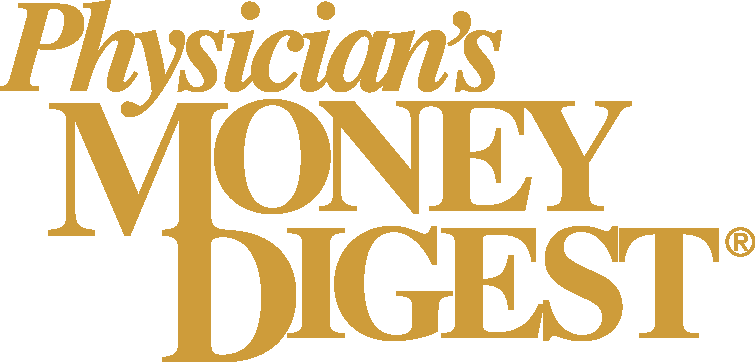LEARNING OBJECTIVES:
- Identify hidden operational inefficiencies such as disconnected tools and redundant processes that lead to clinician burnout.
- Explore how artificial intelligence (AI)-driven solutions and integrated technology stacks can prevent the negative impacts of excessive documentation.
- Compare multiple payment models and determine which aligns best with a practice’s clinical, financial and operational goals.
As the health care landscape grows increasingly intricate, independent primary care practices are facing a major challenge: hidden costs. These unseen operational and financial drains threaten both profitability and the delivery of high-quality care; frequent contributors include fragmented technology systems, clinician burnout and misaligned payment models. Fortunately, hidden costs can be systematically addressed through targeted interventions.
In a recent Medical Economics Practice Academy session, Sara Pastoor, M.D., M.H.A., FAAFP; and Manisha Goud discussed practical strategies to strengthen practice stability and reduce unnecessary costs. Their discussion focused on optimizing technology integration and clinical workflows as well as aligning payment structures with organizational goals. By implementing these best practices, independent primary care organizations can build more efficient, sustainable operations while ensuring consistent delivery of high-quality, patient-centric care.
SOLUTIONS AND TAKEAWAYS
- Fragmented systems are a top driver of hidden costs; prioritize integrated platforms that streamline workflows and reduce duplication.
- AI-powered tools can improve clinician productivity and reduce burnout by eliminating excessive documentation and missed tasks.
- FFS models often misalign incentives; practices should explore membership, value-based or hybrid options that promote quality care.
- A practice’s technology stack should be built for interoperability, not vendor loyalty. Choose best-fit tools that integrate well with each other.
- Optimizing workflows, aligning incentives and supporting clinician well-being are key to improving financial performance and delivery of high-quality care.
EVALUATING OPERATIONS TO PINPOINT AND REDUCE INEFFICIENCIES
Hidden costs in primary care often stem from fragmented systems that force staff to toggle between multiple platforms, resulting in duplicated work and lost time. According to Pastoor, “These disconnected tools lead to a lot of inefficiencies and increase your overhead, which results in longer workdays, delays care and [frustrates] everyone working in your practice.” Additionally, the high-noise, low-signal data within most electronic health records (EHRs) force clinicians to spend valuable time hunting for meaningful information.
Integrated platforms, particularly those designed with primary care in mind, offer a tangible solution. With bidirectional patient information exchange and reduced administrative overhead, these platforms improve communication and coordination, leaving clinicians with more time to focus on the quality of care being delivered. “All-in-one solutions that have the billing service you need, the AI you need, [and] the ability to capture and bill for chronic care management, remove patient monitoring, and [provide] other services built into the EHR are the best way to go,” Pastoor said.
In today’s health care environment, integrated platforms often include AI-driven capabilities. For example, Elation’s AI scribe captures clinician/patient conversations and generates structured subjective, objective, assessment and plan notes, complete with actionable tasks such as discontinuing or starting medications, ordering laboratory tests, generating referrals, and scheduling follow-up appointments. Manually managing these tasks creates additional administrative burden on clinicians, inflating labor costs and diverting attention from patient care. Over time, the resulting strain can lead to increased staff turnover, further raising the total cost of ownership and lowering overall practice morale. With integrated, AI-driven technologies, clinicians can offload administrative documentation and remain fully focused on patient care without worrying about certain tasks falling through the cracks.
Although smarter technology addresses many issues faced by independent primary care practices, payment structure also plays a crucial role. “Payment limitations can be a significant barrier to optimizing your practice,” Pastoor said. “It’s so important to make sure that you align your payment model with whatever your practice’s financial, clinical and operational goals are.”
In fee-for-service (FFS) or direct pay models, success is driven by volume and has no connection to incentivizing value or outcomes. “To improve primary care and make [it] a better experience for health care professionals and patients and to get more value out of the health care dollars we invest, innovation in payment arrangements needs to happen,” Pastoor, who views multidisciplinary teams as the future, said.
Fortunately, more innovative models exist. Membership models act like subscriptions; they are less driven by volume and offer flexibility that supports patient-centric care, including virtual solutions. Value-based care involves insurance companies and is designed to incentivize outcomes — either process measures or total cost of care — that are, in theory, tied to delivering better value. Hybrid models combine an FFS model with a membership model, with varying payment approaches for different patients. Concierge models involve billing insurance while collecting a membership fee for all patients, creating dual revenue streams, lowering the membership fee, increasing practice revenue and providing high access while improving financial sustainability. “By selecting the right model, you can make sure that you are, by design, creating long-term success in your practice,” Pastoor said. “We know incentives drive behavior.”
Goud agreed, emphasizing that using AI-driven technologies and innovative payment models not only improves the clinician and patient experience but also strengthens the financial foundation of the practice. “Optimizing your technology stack is at the heart of driving efficiencies across the board and will set you up for long-term success,” Goud said. She noted that practices can evaluate and improve their technology stack without locking into a single vendor. A practice does not need to commit entirely to one platform, but every solution in its stack must integrate effectively and be best suited for that practice’s unique needs.
When systems work seamlessly together, staff spend less time troubleshooting or duplicating tasks, support becomes more targeted, and operations run more smoothly. This creates space for initiatives that drive growth and improve care. “Instead of spending time stitching together disconnected tools, your team can focus on streamlining operations that positively impact patient care and reduce burnout,” Goud said. “It’s all interconnected.”
Check out the full video and materials of this session.
















